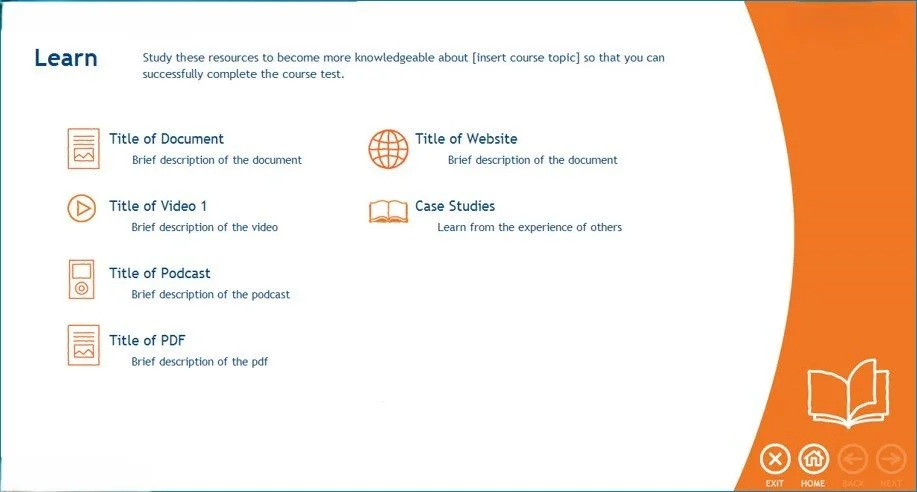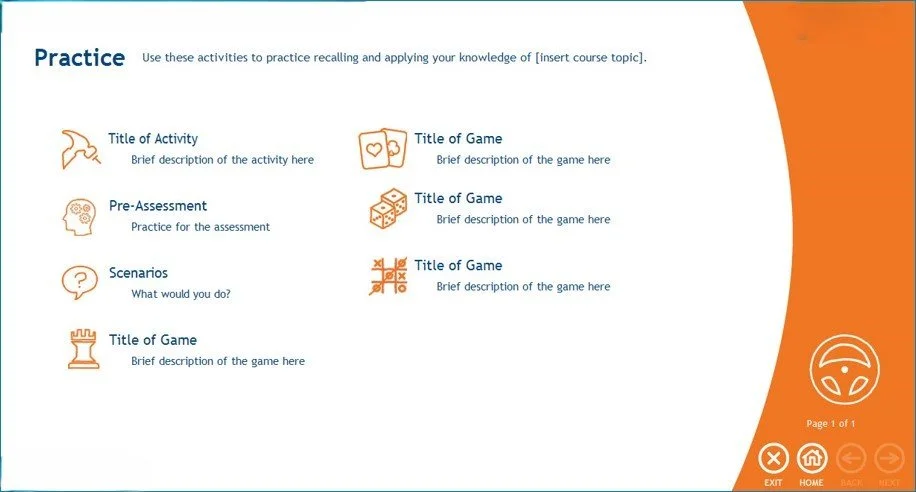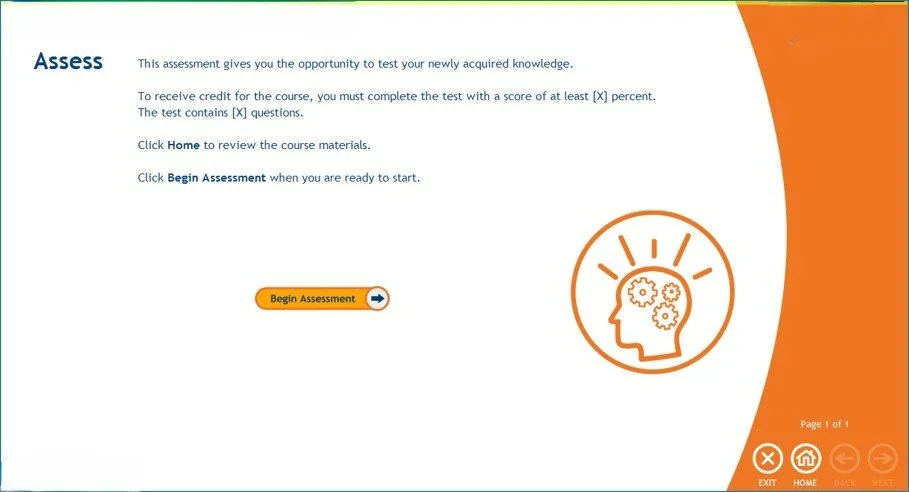Four-Door Model
As its name suggests, the four-door model groups a course into four doors:
A library of content, such as videos, articles, and podcasts.
A practice door of fast paced activities recalling and applying concepts from the Learn area.
A discussion door, where people can connect and discuss ideas.
An assessment door, where people can show they’ve mastered the topic and get credit for the course.
The four-door model is more interactive with less reading and listening. Learners can start anywhere in a course, even taking the assessment first to test out when appropriate. They have control. If they already know something, they can skip that content and focus on what they actually need to learn. As an instructional designer, I was able to focus more on designing engaging interactions and less on rewriting already existing content to fit a predetermined slide format. These four-door courses were also faster and cheaper to develop.
The Learn Door
This screen shot is a mock-up of the Learn door for the courses I designed for SunTrust Bank. It contained information required to master the learning objectives and pass the assessment. This door was a collection of documents, video, podcasts, policies, Captivate demonstrations, and Web pages. The Learn door typically used existing content. I, or another instructional designer on the team, curated the content here, instead of rewriting it. That way, the learner knew where to find the content for reference after the course, and instructional designers had more time to do what they do best: develop activities.
The Practice Door
The Practice door contained fast-paced activities for recalling and applying concepts from the Learn area. These activities included interactive games, case studies, role-playing exercises, and so on. Learners who struggled with the practice activities could return to the Learn door or Discuss door for help.
The Discuss Door
The Discuss door was an area for people to engage in or initiate discussions about course topics. Formats could include SharePoint, Teams, Slack, and so on. With SunTrust, discussions were tightly controlled. But with Nike, they were less heavily moderated. Either way, discussions were a great way for learners to engage with course concepts and begin thinking about how they would apply them to their jobs.
The Assess Door
The Assess door contained the test that learners must pass before they got credit for the course. At SunTrust, learners could go directly to this area, if they chose. If they passed, they saved time by not having to focus on what they already learned. If they failed, they could go back to the preferred path of learning with knowledge of what the end goal was.



